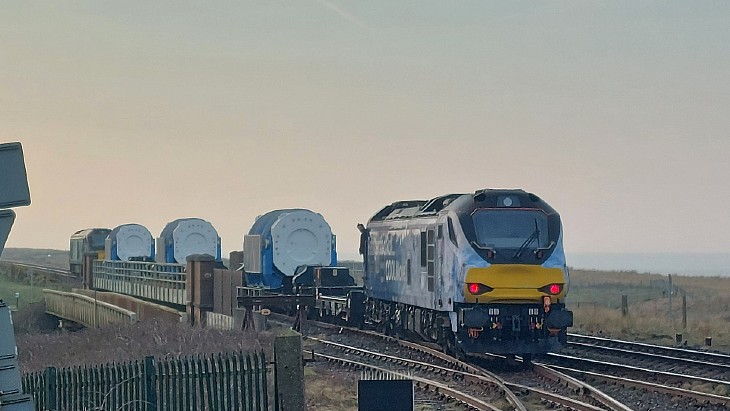Interim waste storage facility completed at Unterweser
.jpg)
The LUnA (AZU 2) warehouse is 79 metres long, 17 metres high and 28 metres wide. Almost 8000 cubic metres of concrete and 1562 tonnes of steel were used in its construction, which began in March 2018. It is licensed to hold up to 5000 cubic metres of waste. The LUnA facility is intended for the storage of low- and intermediate-level waste resulting from the operation and decommissioning of the Unterweser plant, which shut down in 2011. This includes items such as protective clothing, filter materials or system parts. From 2027, this waste will be transferred to the Konrad repository for low- and intermediate-level waste.
"The LUnA interim storage facility is an important part of the disposal chain for low-level and intermediate-level radioactive waste resulting from the dismantling and thus an important element in the implementation of our dismantling strategy," said PreussenElektra CEO Guido Knott.
"We set an ambitious time frame for the construction of the LUnA," said Gerd Reinstrom, Unterweser plant director. "We were not able to fully comply with this, particularly due to the heavy workload of individual service providers. Nevertheless, the construction and commissioning have all been successfully completed and we are proud that the warehouse can now be put into operation."
The BGZ is now operating all three interim storage facilities at the Unterweser site. Operation of the high-level waste interim storage facility, commissioned in 2007, was transferred to BGZ in early 2019. It took over responsibility of the AZU 1 interim storage facility for low- and intermediate-level waste, commissioned in 1981, at the beginning of this year.
In October 2016, the German cabinet adopted a draft bill on financing the decommissioning of the country's nuclear power plants and management of its radioactive waste. The bill came into force in December. Under the draft, the reactor owners involved - EnBW, EOn, RWE and Vattenfall - must pay some €23.6 billion ($25.7 billion) into a state-owned fund for decommissioning of the plants and managing radioactive waste. The amount includes a 35.5% risk premium which exempts them from having to make any additional contributions to the fund.
Following that legislation, in March 2017 the Federal Ministry for the Environment, Nature Conservation, Building and Nuclear Safety (BMU) and GNS Gesellschaft für Nuklear-Service mbH established the BGZ joint venture to enable the government to take over intermediate storage and final disposal of radioactive waste. In May 2017, GNS announced that it had reached agreement with the BMU for the transfer of its share in BGZ so that the federal government would become the sole owner of BGZ.
As part of the agreement, GNS will transfer its interim storage activities to the government, including the existing central interim storage facilities in Ahaus and Gorleben, which were transferred to BGZ at the end of July 2017. The management of 12 onsite interim storage facilities at German nuclear power plants are also being transferred to BGZ starting with high-level waste and used fuel in 2019, and 12 warehouses with low- and intermediate-level waste from operation and dismantling of nuclear power plants in 2020.
_17992.jpg)
_75800.jpg)








_50521.jpg)

